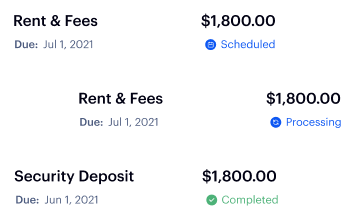Remote job opportunities now account for 58.6% of the total U.S. workforce. Today, 4.3 million Americans embrace flexible work. This shift is replacing the monotony of office culture and commutes with work-life balance and wide open spaces.
Suburban and rural areas are seeing an influx of interest from digital nomads looking for more room and privacy. Remote workers who thrive in the daily hustle and bustle are choosing city properties with spacious layouts and coworking areas that cater to the work-from-home (WFH) lifestyle. If you’re considering investing in a rental property, buying in less popular areas may have a better ROI, thanks to this uptick in remote work.
Here is a list of our top picks for the best places to invest in that remote workers will find attractive.
1. Boulder, Colorado
- Median home price: $994,000
- Median price per square foot: $544
- Rental vacancy rate: 4%
- Avg age: 28
- Median rental income: $2,995/month
Nestled in the foothills of the Rocky Mountains, Boulder, Colorado, is one of the best places for remote workers who appreciate the outdoors. This charming college town has tons of bike paths and hiking trails along Chautauqua Park, Boulder Creek Path, and Flagstaff Mountain. Neighborhoods in Downtown Boulder and University Hill are packed with coworking spaces, free public WiFi, and renowned restaurants.
Boulder has a steep price tag to break into the real estate market, but rent is 36.3% higher than the national median to help offset these costs. Apartments over $2,000 represent 49% of Boulder, Colorado rentals, with an average rental income of $2,663. The state has also banned rent control, giving way to an annual rent increase of around 15.3%.
2. Seattle, Washington
- Median home price: $775,000
- Median price per square foot: $531
- Rental vacancy rate: 3.1%
- Avg age: 35
- Median rental income: $2,463/month
Seattle, Washington, ranks highest in the country for its number of free hotspots—not to mention a generous amount of coffee shops (both a staple for remote workers). Residents can enjoy waterfront views from almost anywhere in the city, including Downtown, Belltown, Ballard, and Central District. The monorail is a scenic, above-ground train that runs between popular sites like Pike Place Market, Olympic Sculpture Park, and the Space Needle.
There are 68,595 rentals in Seattle, with 1-bedroom units making up the bulk of the market. However, the upward pressure of 16.6% in annual rent increases is pushing people to suburban areas with rental homes and multi-family units. Consider investing in growing real estate markets in Sammamish, Mercer Island, Redmond, or Kirkland.
3. Austin, Texas
- Median home price: $652,096
- Median price per square foot: $321
- Rental vacancy rate: 6.6%
- Avg age: 33
- Median rental income: $2,450/month
Austin, Texas, is growing faster than any other city in America. The live music scene, constant sunshine, and tech giants like Apple and Google all draw a steady stream of new residents yearly. The best places to work remotely in Austin are just past the city limits in Hyde Park, Barton Hills, and Greater Austin. Locals cool off from the Texas heat with boat rides on Barton Creek or the Colorado River that runs through the town center.
Despite the high population growth, construction has kept up with demand. This is a good sign for investors looking to build rental properties in Austin and capitalize on annual rent increases of 23.2%. The most lucrative neighborhoods in Austin are Bouldin Creek, Downtown, and Old West, which bring in up to $2,820 in monthly rental income.
4. New York City, New York (outside the city core)
- Median home price: $799,000
- Median price per square foot: $740
- Rental vacancy rate: 3.4%
- Avg age: 37
- Median rental income: $3,500/month
New York City is home to over 8 million residents across 59 districts that are all bursting with culture. Park Slope, East Village, and Astoria offer an array of restaurants, parks, and local events without the downtown crowds. The Upper East Side, Harlem, SoHo, and Midtown are the best places to work remotely in NYC. These neighborhoods are filled with shared workspaces like WeWork, Lincoln Center, The Cooper Hewitt Museum, and TEEM.
Renters take up 67% of New York City real estate, and the majority (91.54%) are paying over $2,000 in monthly rent. It’s not cheap to invest, but most NYC property is profitable when rented over a long holding period. Neighborhoods in Chelsea, West Village, and Battery Park City can produce a higher return, with average rent prices hitting $5,200 per month.
5. Tucson, Arizona
- Median home price: $345,000
- Median price per square foot: $211
- Rental vacancy rate: 6.8%
- Avg age: 34
- Median rental income: $1,800/month
Tucson, Arizona, delivers natural landscapes with incredible views for a cost of living 6% below the national average. Downtown Tucson is made up of smaller, trendy districts that offer public green space, cafes, and culture stops like the Temple of Music and the Tuscon Museum of Art. Neighborhoods in Miramonte and Keeling have a suburban vibe with a quick commute to Reid Park, which has a 9,500-seat baseball stadium, pond swimming pools, gardens, and a 24-acre zoo.
Tucson, Arizona, has lower listing prices than other major metros, creating a favorable climate for investors to get into the real estate market. The average monthly rent in Tucson is $1,200 for an apartment and $1,981 for a single-family home. Rental income is less than in other big cities, but the market saw an annual rent increase of 20.4%, and Arizona has no rent control laws.

FAQs
Based on our list, New York City has the most remote workers. Approximately 4.3% of its labor force (4,040,006) works from home, which translates to around 173,720 people.
Do landlords need to make special accommodations for remote workers?
Landlords are not required to accommodate remote workers, but it could reduce tenant turnover. These amenities can include soundproofing, high-speed internet, and dedicated workspaces in units or common areas.
Landlords will also need to determine rental property costs associated with remote work, including:
- Extra wear and tear if tenants are home more often.
- Higher insurance premiums if clients visit a tenant's unit.
- Increased utility costs for additional usage.
- Noise complaints if a tenant's job disturbs others.
Remote workers tend to rent larger properties—5 to 7 percent bigger, on average—to accommodate home offices. One-bedroom units with a den are popular for the additional workspace without the price tag of an extra bedroom. Private outdoor areas and natural sunlight also rank high for property features among tenants working from home.






